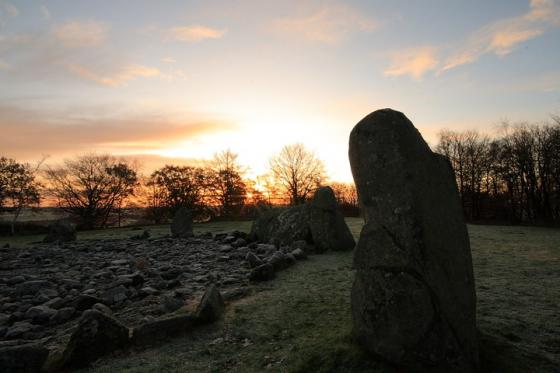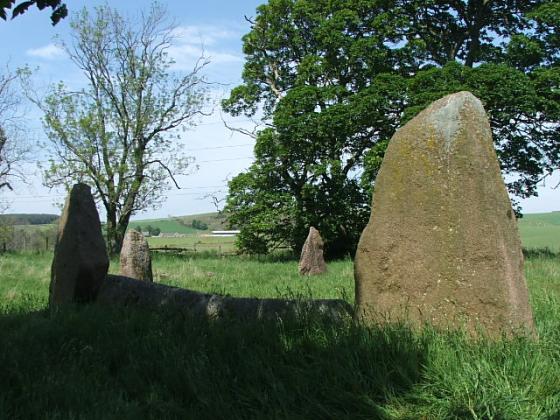Burl has suggested this is the remains of a recumbent stone circle, but more recent thought (see CANMORE) suggests it was a cairn which has been progressively robbed out, leaving some of the large kerbstones left at the edge.
According to Grinsell, (quoting from a 1901 source in his ‘Folklore of Prehistoric Sites..’) “in early days an attempt was made to build a chapel within the stone circle, but.. each night the walls sank out of sight and the building began anew every morning, until eventually the unlucky work was abandoned in despair.”
It’s no good trying to Christianise these places you know.
Not far away at NJ705190 is the ‘Ark Stone’, suggested by the antiquarian source above to be the lost recumbent stone of the circle, but boringly stated by modern archaeology to be a perfectly natural (though ark-shaped) granite boulder.





















































































































































































































































